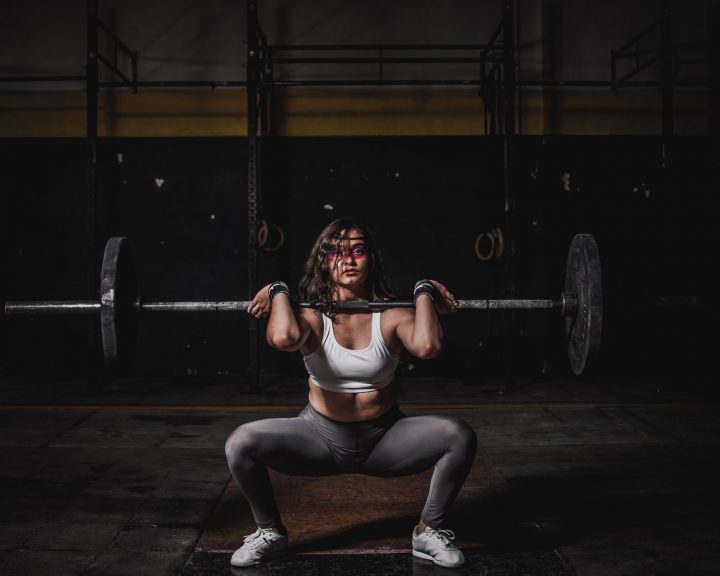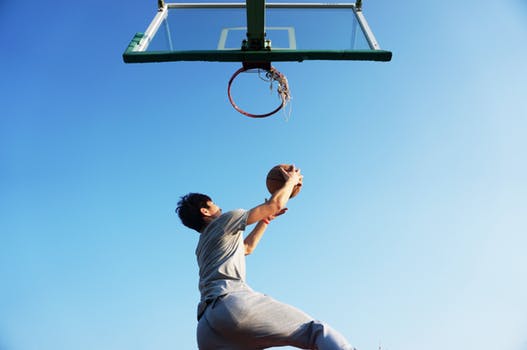What I think of as postural strength is critical to the performance of many sports. This may be a poor technical name, but to me it involves an ability to maintain posture while transferring force. For example, when an athlete is sprinting we coach them to maintain their posture while driving the foot into the ground. In track and field, jumpers lever off one leg which they attempt to accelerate their body through to perform horizontal and vertical jumps. When pitching or throwing a baseball, we coach athletes to lever off the front leg, which means that it cannot collapse during the throw. The list goes on in sports. There are a multitude of training approaches to this quality, but not all are equally relevant to every athlete. We’re going to approach this looking at the training of three different levels.
Foundational Training
In all aspects of strength and conditioning, athletes need a foundation that their training will build upon. That is true here as well. There are several approaches that lay the foundation for this:
· Athletes need a strength foundation. Before athletes are able to maintain posture during high velocity activities, they need to be stronger. Since sports are ground-based, this means variations of the squat, the deadlift, and variations of hip extension exercises (like good mornings and Romanian deadlifts).
· Athletes need a technical foundation. This is both sport-specific (for example, correct pitching mechanics for a baseball player) and movement specific (for example, correct sprinting mechanics for a running back).
· Athletes should learn how to apply strength quickly. All of these activities that we are preparing for take place very quickly on the playing field. From the very beginning, athletes need to be learning how to apply the strength they are developing. Besides focusing on the sport, this is done through beginning level plyometrics (single-effort jumps) and variations of the Olympic lifts. In addition to teaching application, the triple extension required by these activities is similar to what is required in sports.
Intermediate Training
For me, foundational training runs through high school. Once we get past that level, there are some similarities but differences begin to emerge. Now, this assumes that the athlete went through the foundational training. If the athlete did not, then they start there regardless of their chronological age. However, assuming an athlete has a good foundation in terms of foundational training, once they pass that there is a need to:
· Continue developing the strength foundation. For me, this is a skill and it needs to continue being an emphasis.
· Continue developing the technical foundation. All athletes, at all levels, still need fundamentals.
· Continue learning how to apply the strength quickly. Here’s where differences begin to emerge. If the athlete has a good foundation, then it’s appropriate to begin making this more complex and more sport-specific. Box and depth jumps, sport-specific speed and agility drills (that continue to emphasize good technique), and continuing with the Olympic lifts are all examples.
· Exercises that focus on eccentric strength. I’m borrowing from the powerlifting folks here, but I love pause and eccentric lifts, especially when one gets to the special prep phase of training. This is a tool to help reinforce strength application and is another way to help the athlete learn to maintain posture.
· Unilateral exercises. I know, I’m out of step on this one. I would personally like to invest an athlete’s early training experience with foundational exercises like squats, cleans, pulls, presses, and rows before investing in lunges, step-ups, and one-legged exercises. But, beginning here, I think it’s fine to include these in a supplemental manner. If the athlete has good mastery of the Olympic lifts that we want them to learn, split variations may be appropriate at this point in their career.
Advanced Training
After an athlete has a solid foundation and has developed the qualities in the intermediate stage, they are ready to move on. Not all athletes make it to this point and it is a mistake to rush them into it. We all want to do the workouts of advanced athletes, they look fun, but they won’t work the same for most of us. When I was an aspiring Olympic lifter, I bought Medvedyev’s multi-year training books. The second book includes training for all levels of athlete. Of course I skipped right to the mastery of sport workouts because they were the most fun. Since I wasn’t a master of sport, they didn’t do much for me. So this is a long way of saying that athletes need to build and apply their foundation before getting to this point, if this level is even necessary. At this point, we’re focused on:
· Maintaining strength. There comes a point where adding five more pounds to a lift isn’t worth the time, effort, and injury risk invested in it. There comes a point where the athlete has enough strength for their situation and needs to do a better job learning how to apply it. Very few athletes get here, by the way, but it does happen.
· Continue working on a technical foundation.
· Learn how the athlete’s individual gifts and structure allow for the fundamentals to be varied. Many people are elite athletes and have a genetic difference that allows for them to perform the skill subtly differently than others. This doesn’t negate the value of fundamentals for everyone else, but it is something that makes the elite athlete unique.
· Continue focusing on eccentric strength.
· Consider variable resistance. Again, borrowing from the powerlifting folks, I love using bands and chains after a certain level. This makes training interesting and stimulates the athlete to adapt to different training demands.
· Consider expanding unilateral training, but keep it effective. While performing back squats while standing on a stability ball is very challenging, I’m going to argue that (safety issues aside) you can’t get enough resistance to have a stimulating training experience. So unilateral training has to be balanced to remain an effective training experience. In addition to the intermediate training tools, one-legged plyometrics (jump off one, land on two), split variations of the Olympic lifts, and one-legged variations of the Olympic lifts (again, second pull off one leg, receive on two) can be supplemented into training to focus on this.
· Addressing technical issues. Technical training becomes very, very specific at this stage. If a long jumper collapses the leg he/she levers off of prior to flight, then there would be an unbalanced training focus on that leg (for example, split squats focusing on that leg, one-legged power cleans focusing on that leg, etc.). But this is only done when there is an issue.


